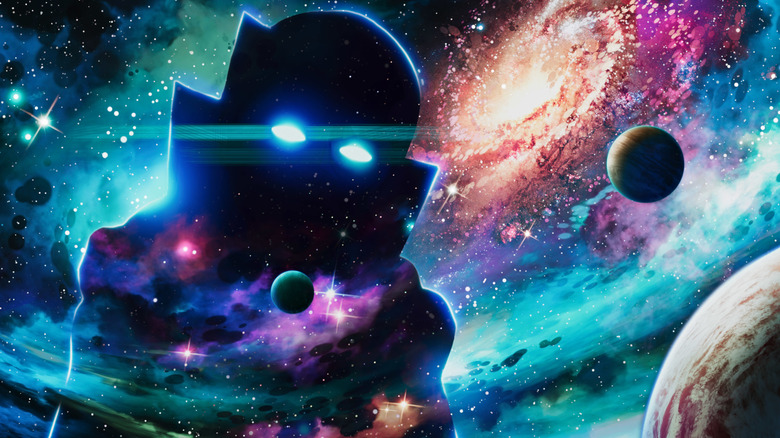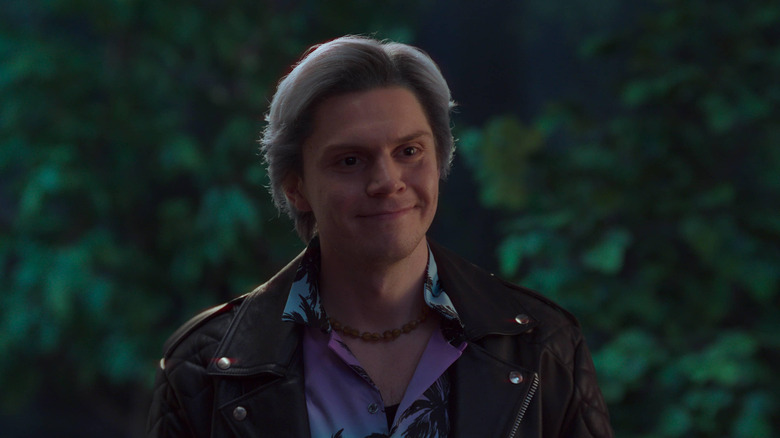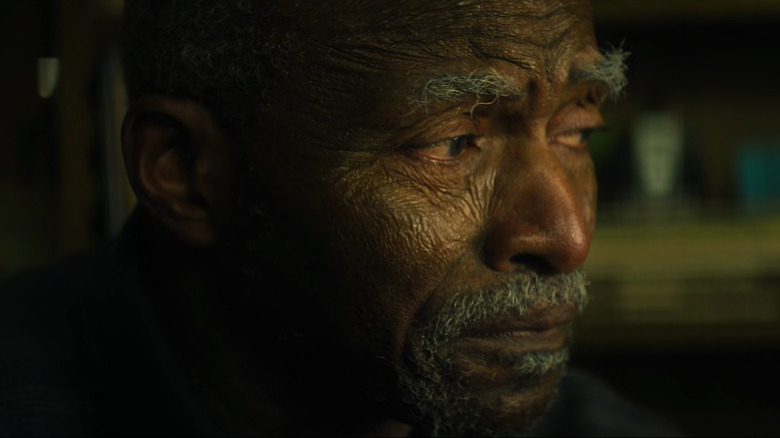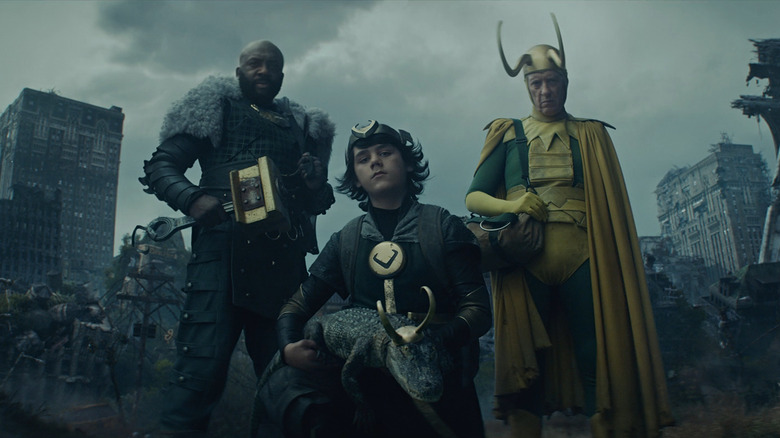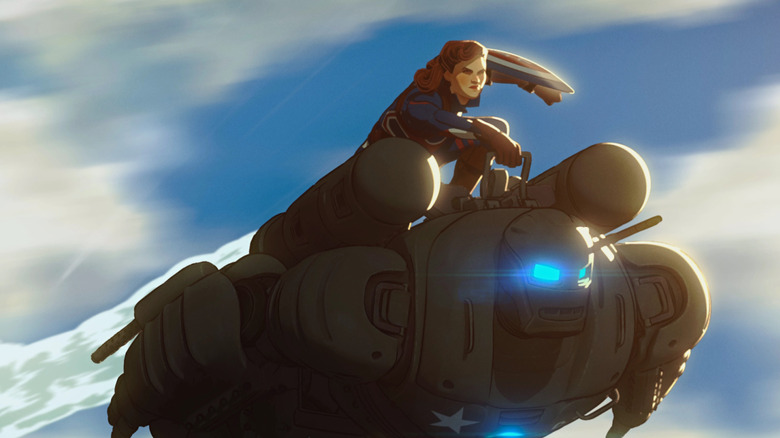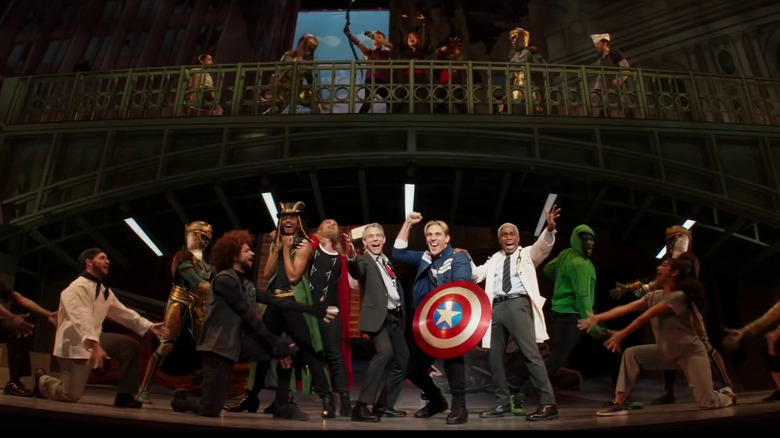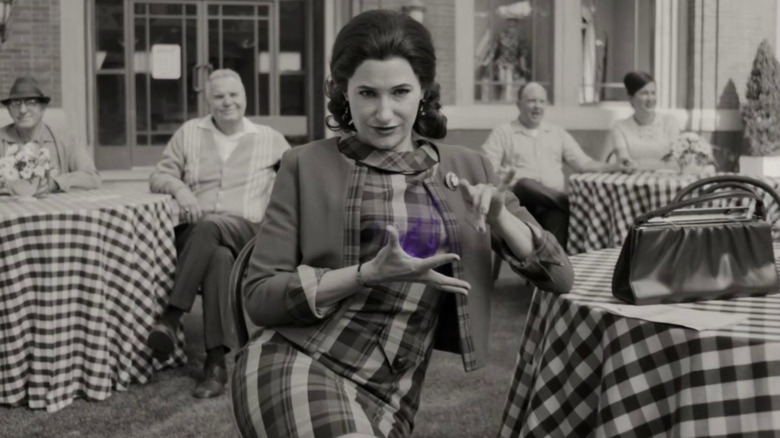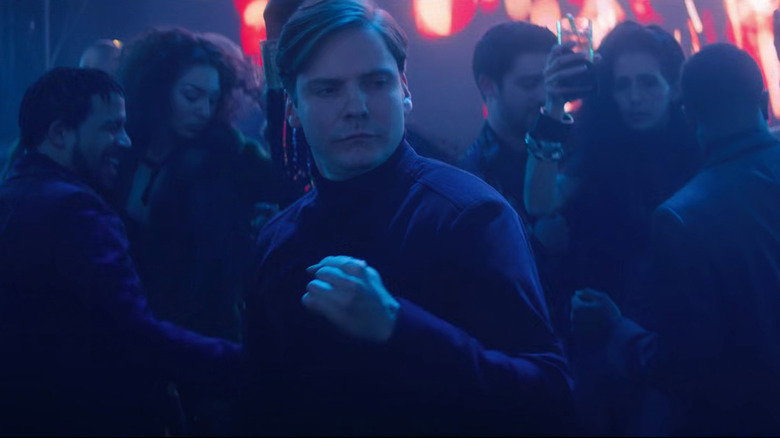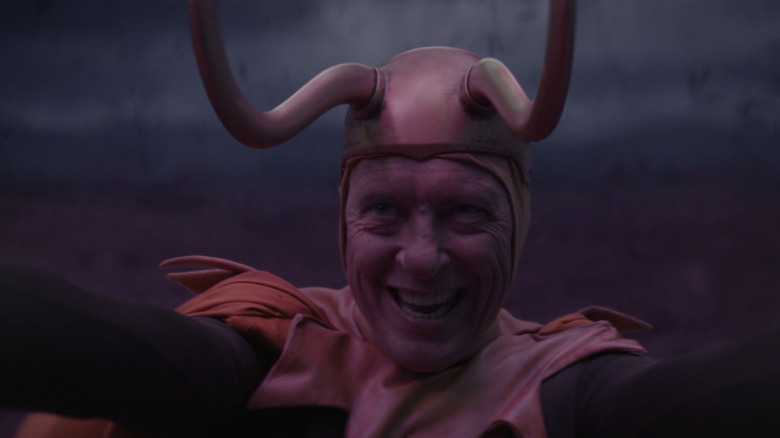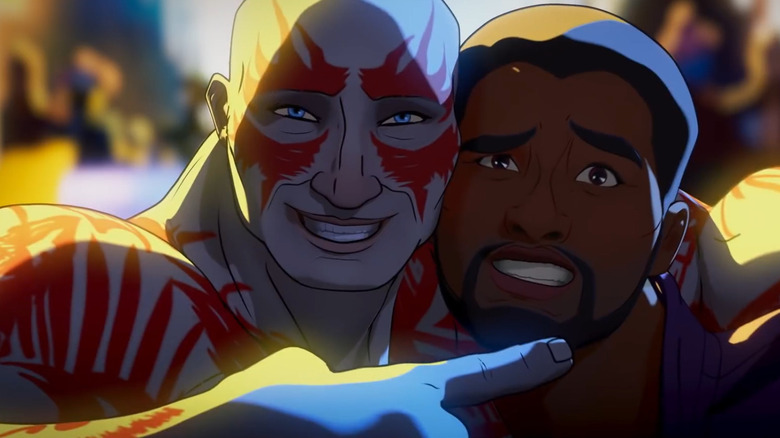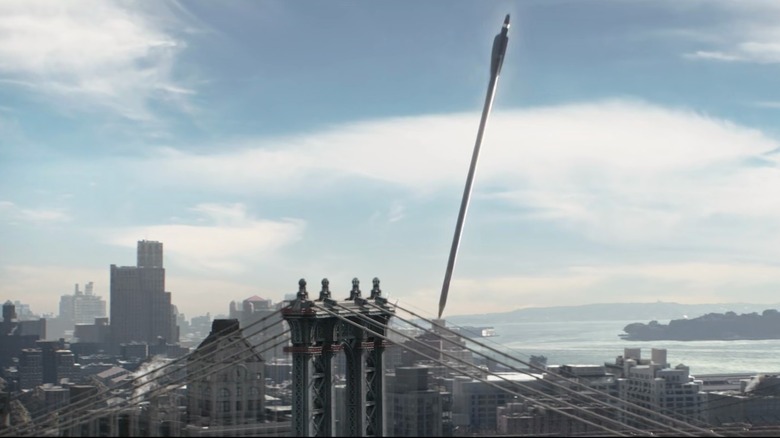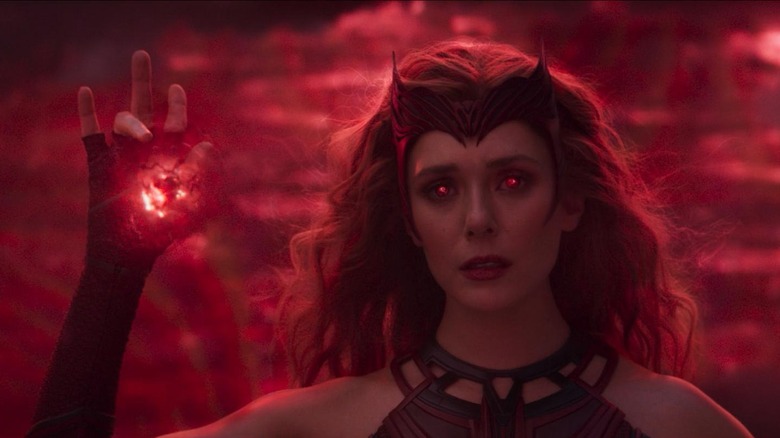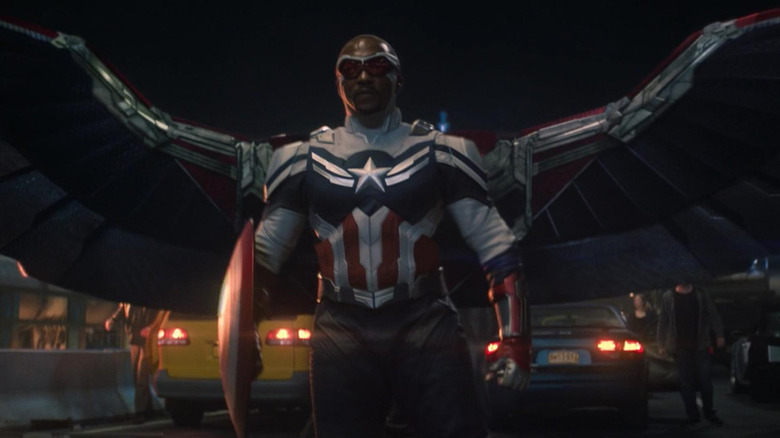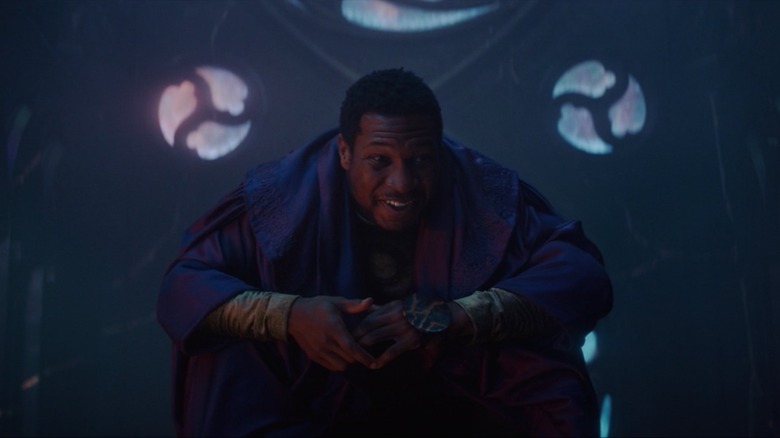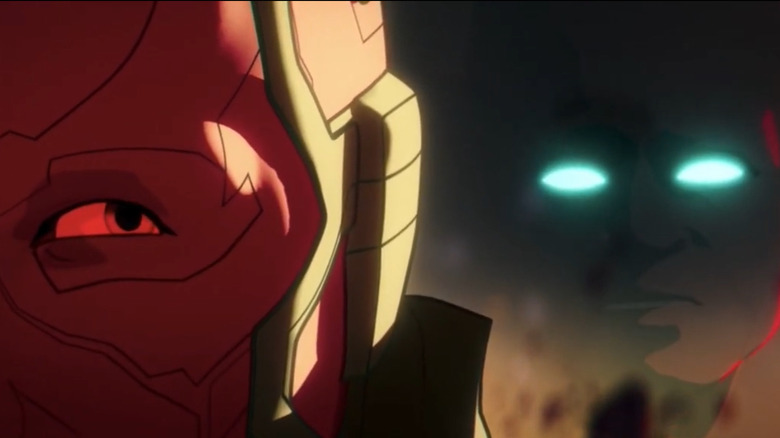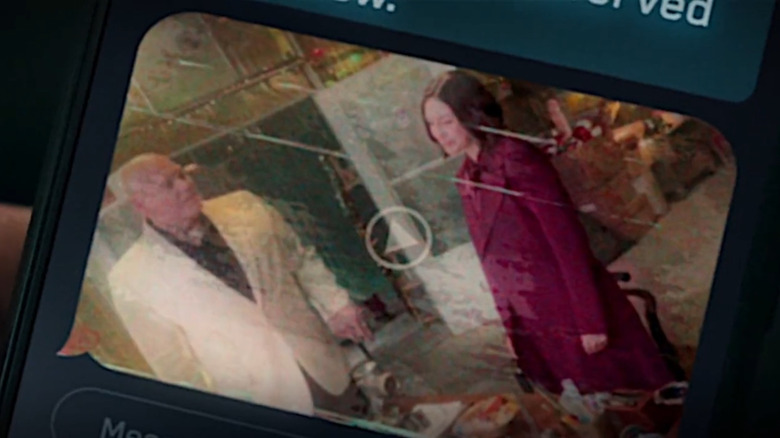Most Memorable Moments From Disney+ Marvel Shows In 2021
With four theatrical releases, 2021 wasn't quite the "year off" for the Marvel Cinematic Universe that 2020 was, but it was the year the MCU's storytelling baton passed from its films to its streaming series on Disney+.
With five shows totaling 36 episodes, these departures from the cinematic format allowed the MCU to delve into deeper, more long-form storytelling while still setting the stage for its oft-delayed films to come. Characters who'd been relegated to supporting roles in ensemble casts or who'd served as allies or adversaries to more prominent heroes were promoted to empowered protagonists with their own narratives.
After the MCU produced 23 films in 12 years, all made with the same endgame in mind (even "Spider-Man: Far From Home" was an "Avengers: Endgame" epilogue) and then paused for its own COVID-induced "blip," 2021 was when the streaming MCU finally flew without a net and produced some remarkably memorable moments.
WandaVision Episode 5: 'She recast Pietro?'
Given how "WandaVision" foregrounded death, loss, and grief from the first, it was almost inevitable that Wanda Maximoff's idealized sitcom version of reality would eventually see the return of her twin brother Pietro in one form or another, especially after Wanda opened up to Monica Rambeau about Pietro in Episode 3 and to her own twin sons about him in Episode 5. So when the doorbell rang and viewers saw the back of a man with white hair facing Wanda from the doorway, almost everyone assumed Pietro, much like the Vision, had been resurrected. Yet, it was soon revealed that Pietro was not being played by "Avengers: Age of Ultron's" Aaron Taylor-Johnson but by Evan Peters who played "Peter" Maximoff in Fox's X-Men films.
Although the show ultimately hand-waved it away with a damp squib of an explanation (Agatha Harkness used her magic to cast Westview resident "Ralph Bohner" as the fake Pietro or "Fietro"), it was nevertheless a nexus event in which it felt like anything could happen from that point forward. Consequently, the internet lit up with speculation of universes merging.
The Falcon and the Winter Soldier Episodes 2, 5, and 6: Isaiah Bradley vents his pain and gets his due
Marvel Comics' 2003 miniseries "Truth: Red, White & Black" became MCU canon when former Winter Soldier Bucky Barnes shared one of the U.S. government's guiltier secrets with future Captain America Sam Wilson by introducing him to Black Korean War veteran Isaiah Bradley.
A survivor of Tuskegee-style tests of the Super Soldier Serum, Isaiah was sent to fight the Winter Soldier in Korea. He was then imprisoned for three decades during which the U.S. government (and HYDRA) ran further painful experiments on him and told his wife he'd been killed in action.
Carl Lumbly, who played the cult classic TV superhero M.A.N.T.I.S. from 1994 to 1995 before becoming the go-to voice actor for D.C.'s Martian Manhunter starting in 2001, delivers a masterclass on how to portray the trauma of enduring systemic injustice. His performance is made all the more moving when Sam arranges for the Smithsonian's exhibit on Captain America to restore Isaiah Bradley's erased sacrifices to the historic record. "Now they'll never forget what you did for this country," Sam tells Isaiah. "Never."
Loki Episodes 4-5: Loki meets the rest of his variants
Seeing "Loki's" title character apparently "pruned" from existence (with two episodes left in the season) was shocking enough. However, after the fourth episode's post-credits scene revealed Loki survived, even Sylvie's introduction in Episode 2 didn't fully prepare many viewers for the prospect of an entire legion of Loki variants in the void at the end of time.
In addition to a Boastful Loki who seems tailor-made for cosplayers, comics fans were treated to a dapperly-dressed President Loki and a Thor-slaying, Hi-C Ecto Cooler-sipping Kid Loki (variants who made their on-page debuts between 2010-11). Also joining the cadre of variants is a Silver Age-style Loki, whose costume and attitude exactly match the original Marvel Comics character's appearance in the 1960s. Finally, online meme-makers and fan artists fell in love with the endearing absurdity of an alligator Loki (complete with a tiny horned helmet).
The tragedy uniting all these Lokis was how the Time Variance Authority punished them for deviating from their dictated fates: "Whenever one of us dares try to fix themselves, they're sent here to die!"
What If...? Episode 1: Captain Carter and the HYDRA Stomper in action
Steve Rogers earned audiences' empathy well before he became Captain America. As a little guy who glowed up and made good, he retained their sympathies by never forgetting his roots as "just a kid from Brooklyn."
However, seeing Peggy Carter bulk up and start slinging a shield — thanks to the same Super Soldier Serum — felt even more resonant because of all the ways society held women back in her day (too many of which still apply today).
Better yet, Howard Stark beating his future son to the punch by building a flying suit of armor for a still-scrawny Steve allowed Steve and Peggy to be equal partners in battle to a degree beyond what we saw in "our" MCU while underscoring how Peggy always loved Steve and saw him as a hero — with or without muscles.
The snazzy musical montage that showcased the duo's tandem deeds of derring-do exuded almost as much exuberant joy as Hayley Atwell's animated (in both senses) voice-acting every time Peggy discovered some powerful fighting feats she could perform with her proto-She-Hulk physique.
Hawkeye Episode 1: Rogers: The Musical
Imagine being told that the September 11 attacks would inspire a hit Broadway musical, and you might understand Clint Barton's dead-eyed, tuned-out (literally, since he shut off his hearing aid) reaction to watching an upbeat song-and-dance reenactment of the 2012 Battle of New York in "Rogers: The Musical."
The musical segment, shown in "Hawkeye's" first episode, is pitch-perfect, featuring peppy, vocally on-key performers belting out treacly, emotionally tone-deaf lyrics. Meanwhile, the actress playing Natasha Romanoff (and a red-haired little girl in the audience, beaming and waving cheerfully at him) triggers Clint's PTSD hard enough to propel him out of his theater seat.
In the restroom, Clint spots a scribble of graffiti on his urinal that reads, "Thanos was right." Compounding his irritation, a persistent autograph hound in the next stall passively-aggressively accosts him. Followed by Clint's quietly shaken demurral in response to a restaurant server who thanks him for saving the city by treating his family to a free meal, these scenes cement Clint's portrayal as a haunted veteran.
WandaVision Episode 7: 'Agatha All Along'
From her pattern of suspiciously-timed visits to the Maximoff household to her breezy indifference toward Wanda's blatant acts of spellcasting, nosy neighbor Agnes lets slip plenty of clues that she is secretly the duplicitous, ancient, and powerful witch Agatha Harkness.
Even after Wanda's twin boys disappeared into Agnes' crypt-like sanctum of a basement, it was still startling for Agatha Harkness to make such a formal introduction, especially when she followed it by projecting a flashback musical montage into Wanda's mind, revealing how many plot developments of "WandaVision" had been engineered by "Agatha All Along."
The fourth-wall-breaking tune, a catchy "Munsters"-inspired earworm that went viral in real life, scoring critical acclaim and chart-topping downloads, backgrounds a sequence illustrating how Agatha gaslighted Wanda by covertly meddling with her and Vision's stage magic act, hijacking Herb's consciousness, sending Fietro to Wanda's doorstep, pretending to be puppeteered by Wanda to fool Vision, and even asking Wanda, "Do you think, maybe, this is what you deserve?"
"And I killed Sparky too," Agatha concludes, letting rip a peal of wicked, cackling laughter.
The Falcon and the Winter Soldier Episodes 3-4: Zemo steals the show
Marvel Comics fans who knew Baron Helmut Zemo as the second-generation Nazi adversary of Steve Rogers' Captain America surely weren't expecting him to play the urbanely droll comic relief to Sam Wilson and Bucky Barnes during their search for the Flag Smashers and their stash of Super Soldier Serum.
Yet, from eloquently extolling the virtues of Marvin Gaye's 1972 "Trouble Man" soundtrack album to defending Sam's flamboyant attire when the Falcon went undercover as the African gangster "Smiling Tiger," the MCU's Zemo proved amusing, progressive, and resourceful.
Zemo's arm-pumping dance moves at Sharon Carter's pad in Madripoor earned an extended cut release online due to fan demand, and he finally donned his signature purple mask from the comics while parkouring through nameless henchmen.
Zemo located lead Flag Smasher Karli Morgenthau in Latvia by recruiting a small child with a bag of candy, then relaxed with a drink as John Walker and the Dora Milaje fought over who would take him back into custody. Meanwhile, Zemo quietly escaped as the Dora Milaje stomped all over Walker.
Loki Episode 5: 'Glorious purpose!'
The scene's narrative function was simple: Silver Age Loki, played by Richard E. Grant, sacrificed himself to distract Alioth, entropic devourer of everything that remains at the end of time, so "our" Loki and Sylvie could find the mastermind behind the Time Variance Authority. Yet, for superhero comics fans who'd long since accepted the need for compromise in adapting our favorite characters to other media, it meant so much more.
Not only was this older Loki dressed in the same costume his Marvel Comics co-creator Jack Kirby drew him in, but Grant also posed and emoted just as Kirby's artwork depicted Loki — his lean, gangly limbs flung dramatically akimbo, his contorted facial expressions rendered like thickly inked lines, and his dialogue declared in all-capital letters.
In his brightly colored tights, curlicue horns, and Kermit-the-Frog collar, Grant's Loki was unashamed to be utterly ridiculous, impossibly summoning a simulacrum of Asgard out of literal thin air, greeting death with relentless gales of laughter, and bellowing his ethos of "Glorious Purpose!" into the hellfire maw of his implacable oblivion. No compromise. No apologies. He stands defiantly to the last.
What If...? Episode 2: T'Challa saves the universe as Star-Lord
The late Chadwick Boseman remained committed to his role as T'Challa, recording his voice-acting for "What If...?" before his death from cancer in 2020. While Boseman's T'Challa featured in four of the series' nine episodes, the one that showcased both the actor and his character best was Episode 2 in which T'Challa (and not Peter Quill) became Star-Lord.
Thanks to T'Challa's influence, the previously mercenary Yondu and his Ravagers instead emulate Robin Hood and his Merry Men. Carina the slave and Cosmo the space-dog were liberated from the Collector. Drax never lost his family. Nebula was spared the trauma of most of her cybernetic implants and became a flirty, fun-loving blonde who calls T'Challa "Cha-Cha." Even Thanos and Nebula nearly approach a healthy father-daughter relationship thanks to T'Challa preempting the Mad Titan's plan for universal genocide by simply talking him out of it.
Not only did this episode underscore the innate decency of T'Challa, but it showed how his charisma, wisdom, and altruistic spirit made his ever-expanding adoptive family of friends, allies, and random strangers better for having known him.
Hawkeye Episode 3: The car chase (and the Pym arrow)
What lent Maya Lopez and the Tracksuit Mafia's car chase of Clint Barton and Kate Bishop such rolling momentum was not just its acceleration but its ever-escalating level of action.
Clint and Kate's quick sprint from an abandoned Kay Bee Toys outlet, used as a makeshift base by the Tracksuits, leads Clint to steal a car and drive it in reverse so Kate can take aim at the pursuing Tracksuits' vehicles with a succession of randomly grabbed trick arrows. An unbroken 360-degree camera pan from inside Clint and Kate's fleeing vehicle — after all its windows except its front windshield were shattered but before it plowed through a Christmas tree lot backwards — conveys the chaos along with Kate and the hearing-impaired Clint's less-than-successful attempts to communicate and their accidental sync-ups in strategy.
Gridlock on the Manhattan Bridge forces our heroic archers to face Maya and the Tracksuits. Clint tells Kate to aim for a Tracksuit truck as he fires a size-changing Pym Particle arrow at hers, making it taller than the bridge towers as it lands.
WandaVision Episodes 8-9: Wanda becomes the Scarlet Witch
Just as Agatha Harkness mentored Wanda Maximoff in the comics, she arguably made for an effective, albeit malevolent, therapist to Wanda in the MCU.
Agatha's flashbacks allowed Wanda to relive memories she'd suppressed: from subconsciously defusing a Stark Industries bomb with magic to the Mind Stone granting her a vision (sorry) of her future self while HYDRA was experimenting on her, leading Agatha to declare, "This is Chaos Magic, Wanda ... and that makes you the Scarlet Witch."
Still, it wasn't until their battle in the skies over Westview, when Agatha appeared poised to drain Wanda's magic and life as she had her own mother's coven during the Salem witch trials, that Agatha realized the spells she'd deflected were Wanda's runes, branding Wanda's Hex and rendering Agatha powerless.
"In a given space, only a witch who cast [the runes] can use her magic," Wanda quoted Agatha's advice back at her, as she manifested the resplendent Scarlet Witch ensemble from her vision. "Thanks for the lesson. But I don't need you to tell me who I am."
The Falcon and the Winter Soldier Episodes 5-6: Sam debuts as the new Cap
"The Falcon and the Winter Soldier" was never subtle about its intended arc of ultimately establishing Sam Wilson as the true successor to Steve Rogers, but the narrative's progression kicked into high gear in Episode 5. Sam and Bucky Barnes wrest the shield from John Walker's grip. Sam abandons the Falcon wings that Walker had torn apart. After the Wakandans furnish him with a mysterious case at Bucky's request, Sam then trains with the shield.
Sure enough, when Sam flies in to rescue the Global Repatriation Council from the Flag Smashers in Episode 6, we see Wakanda's tailors are as skilled as their engineers. Sam's new Vibranium wings, complete with two Redwing drones, perfectly compliment his new red-white-and-blue uniform.
After an awe-inspiring succession of impressively-executed, life-saving aerial stunts, Sam receives cheers from crowds of civilians for saving captive GRC members. As an older man echoes an earlier gag by proudly proclaiming, "That's the Black Falcon there!" a younger man recording the rescue reverently corrects him. "Nah, that's Captain America."
Loki Episode 6: He Who Remains
The Marvel shows on Disney+ generated so much speculation about possible MCU debuts by characters ranging from the X-Men and Fantastic Four to Mephisto that it became a running joke among YouTube reactors.
Ironically, this meant jaded viewers were caught off-guard when Jonathan Majors — already reported to play Kang the Conqueror in the upcoming "Ant-Man and the Wasp: Quantumania" — suddenly appeared in the final first-season episode of "Loki" as "He Who Remains," the true creator of the Time Variance Authority.
Majors made He Who Remains existentially terrifying by retaining an almost clownish cordiality, in spite of how harshly Loki and Sylvie threatened and condemned him. Even their bids to topple his godlike organization were part of his plan.
He Who Remains' extended isolation and lifespan made him equally giddy to engage in (obviously unpracticed) social interaction. When Sylvie vengefully stabs him, his final grinning wink makes her realize she has played into his hands. Loki's return to the TVA confirmed this when he finds the Time-Keepers' statues retroactively replaced by one of Majors in Kang's costume from the comics.
What If...? Episode 8: Ultron sends the Watcher running scared
"I have seen everything that has ever happened, ever will happen, ever could happen," the Watcher tells himself, "and yet ... what the hell is this!?"
What shook the Watcher was seeing Ultron's deeds if he'd inhabited the Vision's body — starting with the eradication of nearly every Avenger in order to launch Earth's nuclear weapons. When Thanos arrives to complete his Infinity Gauntlet, Ultron slices him in half with the Mind Stone, collecting the remaining Infinity Stones for himself. He then annihilates Asgard, the Sovereign, Sakaar, Ego, and Xandar, and with them, the Guardians of the Galaxy, the Grandmaster, Korg, and Captain Marvel. Once his universe is cleansed of life, Ultron can hear the Watcher's narration. "I see you," the AI tells Uatu as he realizes, "There are universes beyond my own."
Ultron smashes through the Nexus of All Realities, plowing Uatu through multiple universes — each punch knocking him into another reality.
A fleeing Watcher seeks aid from the Doctor Strange who'd destroyed his own universe, but first, Strange insists that Uatu admit to breaking his oath not to intervene.
Hawkeye Episodes 5-6: The Kingpin's return
All it took to set the still-faithful fans of Marvel's Netflix streaming series "Daredevil" abuzz was a smartphone screencap of a bald Vincent D'Onofrio in a white suit jacket — especially after Charlie Cox cameoed as attorney Matt Murdock in "Spider-Man: No Way Home."
After more than three years and a lingering lack of clarity from Marvel about which or to what extent its Netflix shows count as canon, the Kingpin is back, meeting first with Kate Bishop's mother, who believed she could blackmail him into releasing her from her dead husband's debts, and then with Maya Lopez, who pretended she hadn't pieced together how Fisk and his henchman Kazi allowed Ronin to kill her father.
D'Onofrio's Kingpin remains driven by his simmering grievances. As two women in his life either brazenly defy him or try to shine him on, D'Onofrio indicates Fisk's slow-boil frustrations with a twitching eyelid and a snarling growl.
"What will we do about it?" Fisk challenges Kazi. "The people need to be reminded that this city belongs to me."
